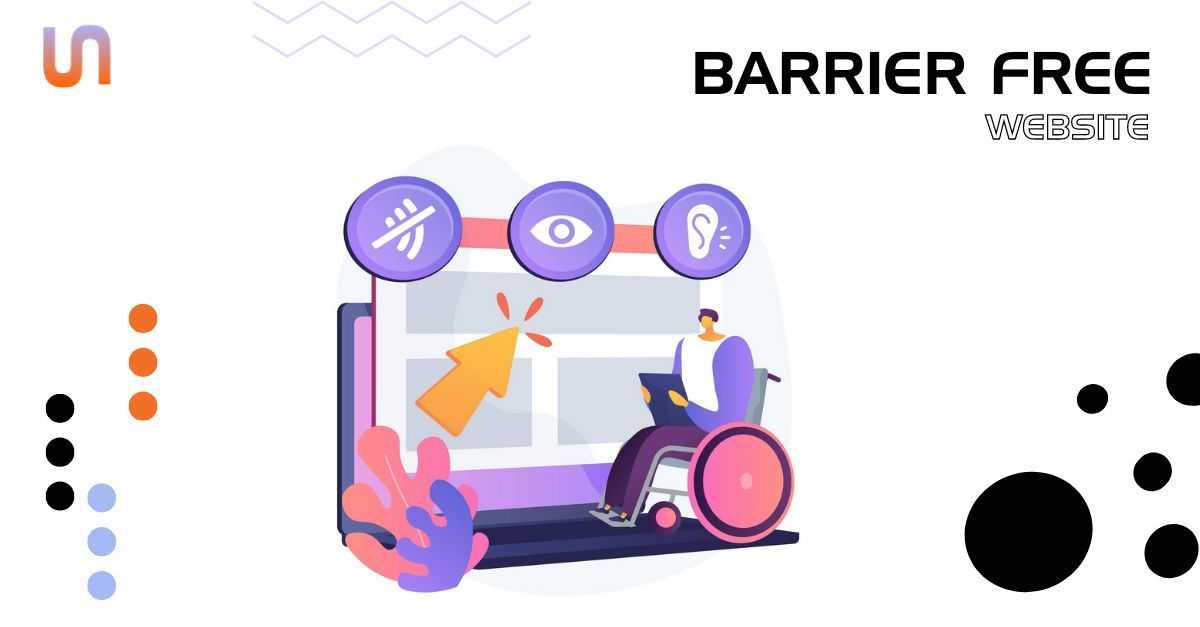Design Accessible Website
Accessible websites give a wider audience access to your offer. It is not only relevant that special services - for example for the respective target groups - are designed barrier-free.

Table of content
Accessible websites give a wider audience access to your offer. It is not only relevant that special services - for example for the respective target groups - are designed barrier-free. The more freely people with disabilities of all kinds can move online, the more inclusive online use becomes. Everyone involved benefits from this. That's why you shouldn't forego taking the issue of accessibility into account for your company.
Best practice - Accessibility Online
For the design of an accessible website, a number of basic principles have proven themselves time and again in use. Use these to create a foundation for your content:
- Use simple and direct language to ensure that all users can easily understand the information on your website. Avoid abstract expressions and use clear headings to identify the content.
- Provide alternative text (alt text) for all images, graphics, and videos to allow users with visual impairments to understand the content.
- Use good color contrast to ensure that users with color vision impairments can easily read the information on your website. Use light colors on a dark background or dark colors on a light background to improve contrast.
- Incorporate fonts that are easy for users with visual impairments to read. Large font sizes and simple fonts such as Arial or Verdana are good options.
- Focus on controls that are intuitive to ensure all users understand the functionality of your website. Avoid controls that are user-friendly but difficult to understand.
- Use well-structured tables and forms to ensure that users with visual impairments understand the content and that screen readers can read it properly.
It's best to regularly check the accessibility of your website. That way, potential problems can be quickly identified and fixed.
Why are Accessible Websites Important?
An accessible website is important because it provides access to information and resources for all users, including people with disabilities. This way, all users have the same user experience - regardless of their physical or technical abilities.
In addition, an accessible website can help a business reach a wider audience and improve customer retention. By creating an inclusive environment, a business demonstrates that it understands and values the needs and requirements of all its customers.
In addition, an accessible website is often linked to other rules and laws that guarantee access to information and resources for people with disabilities. Many countries have laws such as the Americans with Disabilities Act (ADA) and the EU Accessibility Directive that regulate access to websites and digital content for people with disabilities.
What Audiences are being Addressed?
There are many groups of people who have limited access to information for very different reasons.
One is people with a visual impairment. For example, they cannot perceive small font sizes or insufficient color contrast. For deaf people, video and audio files without text integration are not accessible. Auditory signals, for example in chat notifications, are also not perceptible.
In addition, there are people with motor impairments who, for example, can only operate a keyboard to a limited extent or not at all. The website must be able to be captured by programs that take over input on voice command.
Finally, cognitive limitations can play a role. If the contents as well as designs are very complex, they will not be understood.
Implementing Accessibility Online Correctly
There are various ways to implement content accessibility. On the one hand, it is recommended to use a simple basic structure. This is not only beneficial for people who are restricted. The general user experience is also better with a clear and easy to understand structure.
The design should always be built in such a way that the content is understandable even without images and videos. The integration of special tools like a read-aloud button or a magnifying glass are a practical addition.
In addition, there is the possibility of alternatively linking the content in simple language. Here, a copy of the main page is created, so to speak. This has a very simple design, does without unnecessary features such as pop-ups and animations and relies on simple language. This approach is recommended if there is a particularly high proportion of users with impairments.
Is Your Website Accessible? - Checklist
Use our checklist to get an overview of the current situation of your website. We will be happy to advise you and help you make your website accessible. Increase your reach and provide easy access to your content and services for all interested parties.
Texts:
- You use clear and easy to understand texts.
- There are large fonts and a sufficient contrast vohanden.
- Texts are as short and concise as possible.
Images:
- You use alternative text for images to make image content more descriptive to screen readers.
- You use larger graphics to make them more recognizable (possibly magnifying glass function).
- There is sufficient contrast to make graphics and text stand out from each other.
Navigation:
- There is clear and simple navigation that is easy to understand.
- There are headings and list items to enhance the structure of the page.
- They use clear links that are easy to identify.
Forms:
- The form fields have clear and descriptive labels.
- There are clear and unambiguous instructions for each form field.
- They use clear error messages to help users avoid incorrect submissions.
Technical Aspects:
- Your website is compliant with Web Content Accessibility Guidelines (WCAG) 2.1.
- The website complies with EU Directive 2102, if required.
- You use validated HTML markup to ensure that the page displays correctly.
- The website works smoothly on different devices and browsers.
Contact us
Do you have a question? Just write us a message. We will get back to you as soon as possible.
